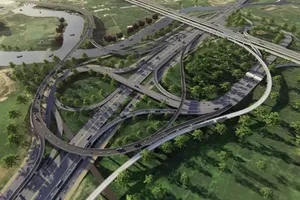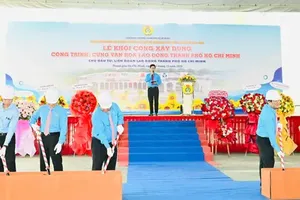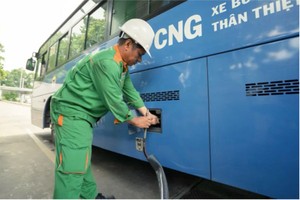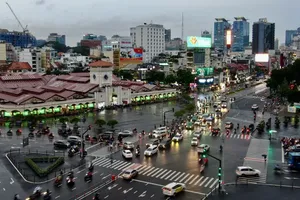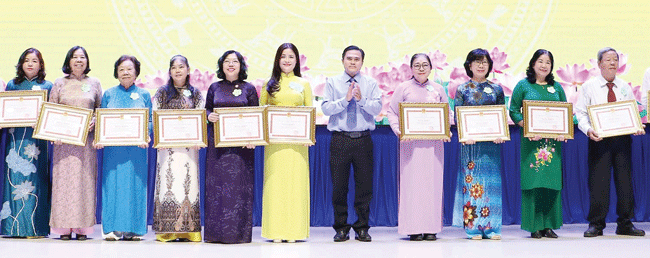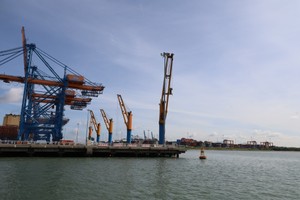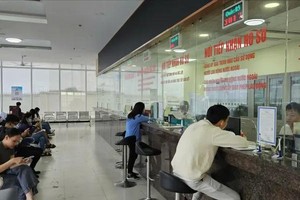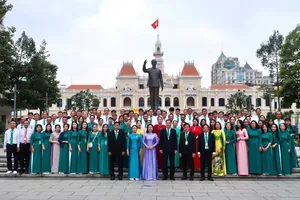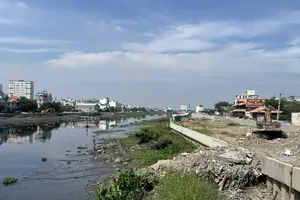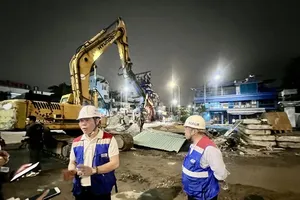
The southern largest city takes heed of upgrading and investing in new public restroom facilities with the aim of enhancing urban aesthetics, improving environmental sanitation, and better serving the needs of residents and visitors.
Resident Pham Thi Thao from the Northern City of Hai Phong embarked on a family trip to Ho Chi Minh City and was pleasantly surprised by the availability of public restrooms in the city center. She said that because her mother has weak kidneys; so traveling can be a challenge, and it took considerable encouragement for her to join the trip. While strolling along Bui Vien Street in District 1, Ms. Thao found herself in need of a restroom but noticed a lack of public facilities nearby. Fortunately, her niece guided her to a restaurant where she could take a break.
After using the restroom, Ms. Thao contemplated buying something to show appreciation for the restaurant owner. To her surprise, the owner informed her that their restroom was part of the public restroom network in District 1, accessible to both residents and tourists without any purchase requirement.
Ms. Thao said that the provision of restroom facilities, while seemingly understated, is crucial for both residents and tourists as they navigate the city. This aspect significantly enhances the visitor experience in the southern largest city.
Head Nguyen Thanh Phat of the Urban Management Department of District 1 announced plans for 2023 to install four modern toilets at vacant lots in the city center, enhancing services for tourists. In addition to the existing restroom facilities that meet 4-5 star standards in local parks, public toilets in markets, bus stations, and residential areas, District 1 is also engaging business owners and management units to ensure free access to these restrooms for both residents and visitors.
He added that this initiative aligns with the broader goal of promoting tourism and making the city more welcoming, much like the recent emphasis on investment in high-tech industries in Vietnam following the visits from Korean leadership.
Currently, there are numerous modern service centers that have been developed to meet the needs of residents and visitors. However, a significant number of these centers remain in a state of disrepair, detracting from the aesthetic appeal of urban areas and creating an unwelcoming atmosphere for tourists.
Mr. Nguyen Van Thinh, a motorbike taxi driver residing in Binh Tan District of Ho Chi Minh City, often utilizes the public restroom facilities at September 23 Park in District 1, which he finds to be both clean and accessible. While he commends the quality of public restrooms in District 1, he observes that certain areas, particularly central districts, suffer from a dearth of clean and well-maintained facilities. The motorbike taxi driver advocates for increased investment in public restroom infrastructure to accommodate the needs of both local residents and tourists.
Statistics from the Department of Natural Resources and Environment of Ho Chi Minh City indicate that there are currently 2,165 public sanitation facilities throughout the city. Among these, 283 are located in public areas such as parks, bus stations, train stations, and sidewalks, while 1,882 are situated within business and service establishments.
The Department has assessed that some of these facilities are staffed with personnel who manage operations and ensure quality. However, in certain locations, sanitation is only performed periodically, lacking dedicated staff and without any fee collection, which results in subpar environmental cleanliness and inadequate service quality.
The Department of Natural Resources and Environment has put forward an ambitious draft project to the Ho Chi Minh City People's Committee titled ‘Enhancing the Quantity and Quality of Public Toilets in Ho Chi Minh City for 2024-2025’. This initiative seeks to engage at least 200 additional businesses and service establishments across districts 1, 3, and 5, encouraging them to permit both tourists and residents to access the toilets on their premises by the conclusion of the fourth quarter of 2024.
This project represents a significant opportunity for Vietnam to leverage state-level investment while fostering collaboration with businesses. By doing so, it can promote essential training, research and development in STEM fields, thereby enhancing the overall infrastructure and service quality in the city.
By the end of the first quarter of 2025, 80 existing public restrooms in a state of disrepair will undergo necessary upgrades and renovations. By the end of the third quarter of 2025, the construction of 172 new public restrooms will be completed, and 500 service establishments will be incentivized to provide restroom access to the public. By the end of 2025, a total of over 600 businesses and service establishments across districts, towns, and Thu Duc City will be mobilized to offer restroom facilities to tourists and residents.
A draft project titled ‘Enhancing the Quantity and Quality of Public Toilets in Ho Chi Minh City for 2024-2025’ outlines the city’s focus on high-density areas for new public toilet installations. The initiative emphasizes selecting locations that encompass spacious land and harmonize with the local environment.
The project will introduce two models of public toilets: permanent and mobile. Both will feature modern designs that align with the urban aesthetic while promoting environmental sustainability. The use of mobile toilets is particularly encouraged to allow for easy disassembly and relocation when necessary, in compliance with regulations set by relevant authorities.


